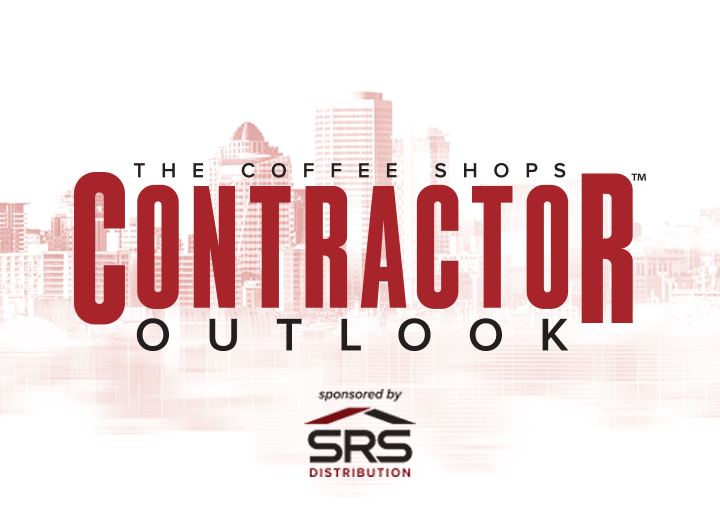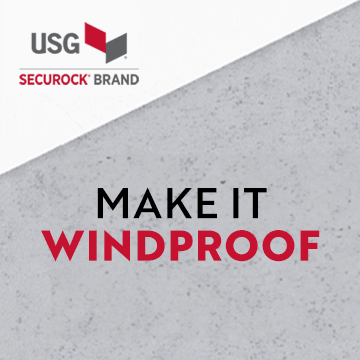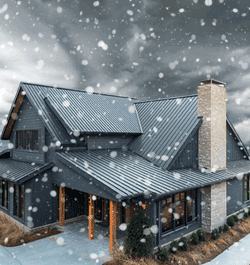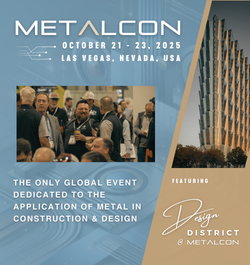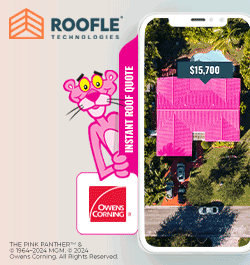what to do with a rubber roof
« Back To Roofers Talkmy brother in law's shop has a rubber roof that has pin holes and small tears all over it. He says its about 10 years old, I think its more like 20. Could I just put insulation over it and put a new roof on. it's a tire warehouse I don't think it's heated. has a steel deck. I think there may be a BU roof under the rubber with no insulation between them. Of coarse money is the issue.
I can easily see what you guys are describing as working very well. I've spread a lot of emulsion over the years, and I know in another life, Bob has spec'd it w/aluminum over premium BUR specs.
But for Copperman's case, lets compare some costs, as he did say cost was a driving issue: Modified - $60/square Propane - $1.50/square Disposal of EPDM - Local cost of dumpster Torch - $150.00 Labor - Whatever Copperman wants to charge his relative.
I have no idea what you'd be talking about for cost on a 12/4 over poly, or cost of the spray rig, or charge to install by a qualified applicator. ????
Just thought I would throw my two cents in on this one. Glass/emulsion roofs wear only through oxidization like the paint on your car, they wear at about a thousands of an inch a year witch is 1 mill. (approx) this being said a roof sprayed with a 12-3 is 120 mills that roof will be there long after we are dead! Now because my dad has been around glass/emulsion and helped create it I have seen roofs 60 years old and still shedding water. I'm not going to say that all emulsion roofs last more than 20 years it depends on what kind of roof foundation you are starting with. A roof that is totally shot de laminating seems,construction splits,ect may only last 10 to 15 years. This being said how long do these new single membranes last? How many tpos are they going to make before they get it right? hbu roofs have became garbage do to manufactures getting the bottom 1% of the oil that makes for a bad product that only last 5-8 years. Tim I think you are spot on this one 4-gallons poly 12-4 on top over epdm that's a great roof! For the record poly is just a divorcing agent so expansion and contraction does not telegraph through, the strength comes from the fiberglass being installed in the jackstraw pattern giving it the tinsel strength of steel.
P.S. Tim we still need to get togather lots of stuff happening on my end getting close to haveing a plan for my next adventure. :lol:
Now with that said, I just had to share the following. It's the ultimate "everything wrong" roof. Installed in 1981 its a single layer of Derbigum HP over a wet asbestos roof. No edge details, no coating, bull-n-rag.... In year 25 (2006) we coated it, reflashed everything, installed T-bar on top of the wall flashings, added new gutter and drip edges, and it's floating along, now 30 years later quite well.
It was a local school and a "What can we do to get by for 4-5 years until we can afford a good roof" solution. I'm first to admit that sometimes the ability to think outside the box is a tremendous asset.
Jackleg 101
Never discount the waterproofing capabilities of pigeon chit. LOL Could we call this Bird -n- Rag?
[IMG]http://inlinethumb64.webshots.com/48575/1125763211049336972S600x600Q85.jpg[/IMG]
Jackleg 102
Howzbout that edge detail?
[IMG]http://inlinethumb25.webshots.com/45848/1125761302049336972S600x600Q85.jpg[/IMG]
Tim & Bob,
Knowing you both, I'm quite sure the two of you would get along just peachy face to face, and probably like each other very well. Interpretation and writing styles are not meshing, but you're both cool. Pull out some guns, talk about WWII pilots, talk about the gov't is screwing everyone and everything except the entitlements crowd.... and you'd both agree that they are screwing them too in order to keep them dependent.... You are both passionate, fiercely loyal, and really are a lot alike in many regards.
Copperman,
Once rubber starts to tear, it tears very easily, and will likely continue to tear under any coating you might apply. Some may have sufficient tensile strength and be poorly adhered so that the tears can continue under the coating, but for my money, I'd take off the rubber and torch a cheap mod bit directly to the BUR. The cost of removing the rubber is miniscule. Then start saving money with the intent to roof it right in the next 12-15 yrs. However, in today's market with energy costs being what they are, a well insulated roof system (min R-18) can pay for itself within 10 years in a climate controlled building. If it's heated, what he saves in heat costs could go a long way toward paying the loan on a new roof. I'm a firm believer that "right the first time" is almost always cheaper.
And before doing any of that, I would make some core cuts and make sure the deck is sound. Dead people get very expensive, very quickly.
Mr. Adams, Maybe you should re-write your original recommendation so it does not conflict with your website as well as other postings of yours that I have read that stress the importance of proper training in the use of the emulsion product and your spray rig equipment. Pitch a process that has some semblance of a starting point and an end point.....not just a product. In reading your first post, it appears to me at least that you are saying Copperman can go get some coating stuff and spray it down onto the EPDM. What such as existing conditions and preparation work prequalifies this as a viable solution?? I guess I am still struggling with emulsion applied directly to EPDM. I agree whole-heartedly the other posters who recommended performing test cuts first....that is a good starting point to determine what options can be explored before any product can be considered. That is part of the process that I build upon when customers look to me for providing them with the information they need to make the best decisions for their particular situation. In your second posting you mention the following:
Most questions asked here assume two things that need not be typed each and every time: 1. It is assumed the repairs will be according to "local" code. 2. Most contractors know, without you having to inform them, that they can't go over a saturated deck.
Mr. Adams, based on what I have experienced with the people in general and the roofing market as a whole I have a hard time assuming much of anything. As far as assumptions are concerned, you have taken your assumptions about me to a level that most people would take exception to. I may not be the brightest bulb in the lamp as well as being riddled with imperfection, but based what others have told me ….I am actually a pretty decent fella.
In closing, I would like to mention that it appears that our views (yours and mine) on the government situation are very parallel and I would like to think that I am every bit as upset with what is going on in our country as you are, if not more. I just don’t understand how you can associate me with all the governmental rhetoric. So feel free to assume whatever you like and vent as you please….I’m done with this. BP
Actually, Bob P, the Technical Services Mgr. at Hicks Roofing, Inc., wouldn't have any problem presenting examples of our re-roofs that are now 30 years old. One of which actually did violate just about every "accepted" example of good roofing practices.
Tim, I hope you can admit that there is some degree of poor advice on this thread, and that doing something right in an area not ravaged by hail every 8 years, tends to be of far greater long term benefit and financial reward than not.
Wow!!!! Now I know why I don't frequent this site as much as I used to. Too much Bull $H!# handed out when honest questions are posted.
Copperman,
You pose a very good question that can have a windfall of answers. I don't know where you are located but you may want to make sure that you are not in an area where building permits are required and/or where people actually know and enforce building codes. Apparently, a lack of knowledge or blatant disregard for code standards seems to be displayed by some of the posters here. I agree with those who recommended that you take a few cores and verify existing roof assembly profile and conditions. If there is an existing asphalt BUR underneath the EPDM, the BUR was probably recovered because......it leaked??? wet insulation....corroded deck....etc.
Section 1510.3 of the International Building Code (IBC) is very prescriptive in addressing new roof coverings. This standard requires any roof that has 2 or more coverings or wet substrate, to be removed completely down to the deck.
Since money is the issue, don't throw good money at it by going with "spray and pray" recommendations and expect anything more than wasted time, effort and money. If your bother in law can't afford to do it as close to right as possible, at least try and do it RIGHT in phases and spread the cost out over a few years. I'd much rather see someone commit to doing less square footage RIGHT, than do more square footage half-A$$ed. There are many in the market place that are very ready and willing to take the money and run.
Good luck, BP
"The bitterness of poor quality is remembered long after the sweetness of low price has faded from memory.†- Aldo Gucci
A mechanically attached fleeced back thermoplastic membrane on the top of existing roof could be the cheapest best option.The material cost around $1 a sq/ft.
hey copperman, youre gonna need a core sample or 3. so you know how many layers,and how long of fasteners you'll need. if its only the bur and the epdm roof then there 2-3 options. if you dont find water under the bur then can overlay. if you find alot of water you'll need to tear off cause you'll trap moisture under new roof and rust out the decking. so if you do overlay i'd tear off the existing epdm roof. it'll come up fast and easy. then use 1/2" fiberboard insulation. this is where you'll need to know what size fasteners so you can screw down the insulation. dont forget plates, lol. then i'd go fully adherd epdm. torch will require base sheet (extra expense plus added risk of fire). got any pics? good luck to ya. shaggy
Yup, Core sample sounds good to me.
I would be concerned with creating a double vapor barrier. Sounds like you have that already. If rubber is laying directly on the BU roof, then that is probably the cause of the 'early death' of the rubber. Rubber & asphalt /petroleum based products are not compatible.
Take a core sample down to the metal deck and see what all you're dealing with.
Hey Copper, Money is the issue. 1st option... lay sleepers down. 1" X Whatever. Then lay your ply. Base and cap.
2nd option... yes lay your temptest, or Black Joe, but how uneven would that turnout to be? That's your call. Where does it drain?
3rd option.... If your doing a Mod Bit. Clean your deck. Lay you Base and Cap.
4th option.... get a kettle, and flood it. It should bonded nicely with the exsisting. Are there parapitts?
I think it"s starting to sound like a load bearing weight issue if there are a few layers of roofing applications. :dry:









